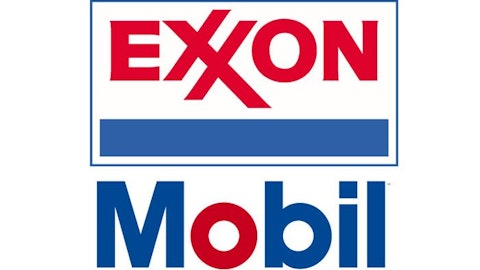Even its most ardent detractors have to admit that Bank of America Corp (NYSE:BAC) has come a long way since the financial crisis. As a self-confessed B of A bear, I’d go so far as to argue that the superbank is at the very least stable, and no longer a danger to itself. But that doesn’t necessarily mean it’s a good investment.
So, what’s next for B of A, and what, if anything, would make it a good investment?
The big uneasy
Out of all the banks to emerge intact from the financial crisis, B of A was by far the most damaged. It’s decision to buy Countrywide Financial — loaded to the gills with toxic-mortgage debt — created massive holes in its balance sheet, and the superbank has been playing catch-up ever since.
There’s been a seemingly endless stream of payouts relating to housing-boom related behavior, as a result of either fines or lawsuits. As recently as January 2013, B of A settled for more than $10 billion over bad mortgages it sold to government-run housing giant Fannie Mae.
Of course, B of A isn’t the only bank that came out of the financial crisis hurting. Citigroup Inc. (NYSE:C) has had its own toxic-mortgage debt blowback to deal with. And even JPMorgan Chase & Co. (NYSE:JPM) and Wells Fargo & Co (NYSE:WFC) — the two big banks lauded most for staying away from the excesses of the housing boom — have had crisis-related cleanup issues, though much less so than either B of A or Citi.
A preview of coming attractions
This January settlement with Fannie Mae is so recent and so enormous, it’s difficult to argue that B of A has put its crisis-related difficulties behind it.

Last week, The Wall Street Journal reported that the Department of Justice is making the case to extend the statute of limitations on financial-fraud cases — typically five years — because the country is at war in Afghanistan. This sounds unbelievable but is absolutely true, and underlines the government’s determination to keep coming after the banks no matter what.
Unfortunately for B of A and its investors, there’s not much the superbank can do about leftover financial-crash matters. The legal and regulatory system will continue grinding on until a natural exhaustion point is reached. Realistically, that could stretch out at least as far as the end of the Obama administration.
Foolish bottom line
In the meantime, B of A needs to keep doing what it’s doing: cutting costs, refocusing its business model, and streamlining its operations. The bank’s first-quarter results are proof positive that, barring major crash-related settlements, the superbank can be profitable.
Deposit balances were up 5% year over year, vitally important to a bank that is first and foremost a consumer bank.
Mortgage production was up, also vitally important in an economy that is traditionally driven hard by the housing sector.
Net income was $2.6 billion, up from $653 million for the same quarter last year.
Even total revenue was up, by 5%, in a quarter when revenue was down at Chase & Co. (NYSE:JPM) and Wells Fargo & Co (NYSE:WFC).
Investors who bought shares at the start of 2012 and hung on until the end were rewarded with a better than 100% return. Right now, shares are trading from a little more than $12. Certainly the bank can do better than that, and it probably will, but it will take a long time. And the up-and-down gyrations could be severe in the meantime.
The Motley Fool preaches long-term, buy-and-hold investing, and an investment in Bank of America Corp (NYSE:BAC) might be the ultimate test of that.
The article What’s Next for Bank of America? originally appeared on Fool.com.
Fool contributor John Grgurich owns shares of Citigroup and JPMorgan Chase. Follow John’s dispatches from the bleeding heart of capitalism on Twitter @TMFGrgurich. The Motley Fool recommends Wells Fargo. The Motley Fool owns shares of Bank of America, Citigroup, JPMorgan Chase, and Wells Fargo.
Copyright © 1995 – 2013 The Motley Fool, LLC. All rights reserved. The Motley Fool has a disclosure policy.

